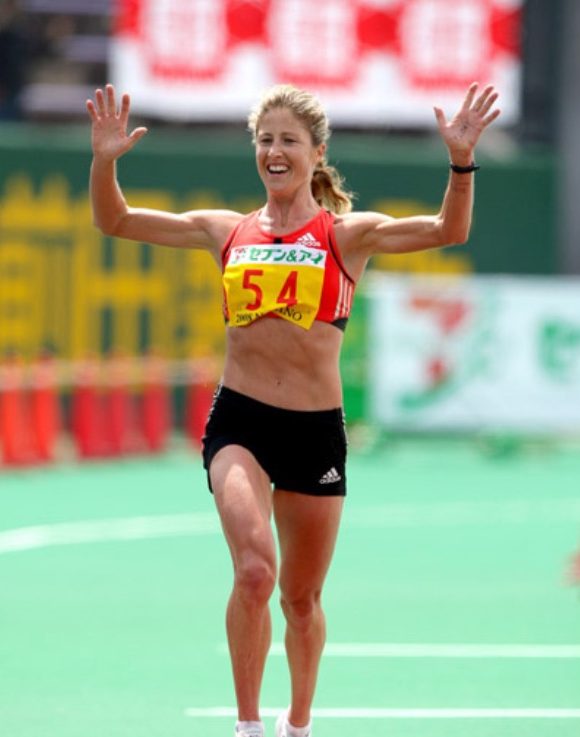
Let’s face it, pacing is a challenge that most marathoners have grappled with at some point. In fact, a 2021 study revealed that 17% of women and 28% of men tend to “hit the wall” during a marathon. This struggle is not limited to specific ability levels or age-groups, making it a common hurdle for all of us.
As a fellow marathoner, I’ve had my fair share of pacing struggles. Many of my earlier marathons were approached with a “go for broke” mindset, only to find myself dropping off my initial pace by over 30 seconds per kilometre in the later stages of the race. The final kilometres were a grind to keep my legs moving in the right direction. I understand the frustration and the many factors that can impact your ability to hold a consistent pace for the full 42.2kms.
Inadequate carbohydrate intake and glycogen depletion, dehydration, mindset and mental focus, physiological issues such as gastrointestinal issues or cramping and pacing strategies (or lack thereof) are all factors that can influence your finishing time.
With the right approach and understanding, you can optimise your pacing strategy and run the race of your life.
A well-paced runner outperforms those who start too fast or too slow.
In part one of this blog we explore your target pace using marathon pacing calculators, adjusting pace for race conditions and negative split concepts.
Before embarking on your marathon journey, it’s essential to have a clear understanding of your target pace. Utilise a marathon calculator to determine the pace required to achieve your desired finishing time. By knowing your target pace, you can establish a realistic pacing strategy and avoid starting too fast, which can lead to early fatigue. Some of our favourite marathon pacing calculators include Strava’s Race Pacing Guide and Garmin Connect’s Race Predictor. Both provide a convenient way to gauge your fitness level and plan your pacing accordingly.
Estimating your target pace will be influenced by your overall health, level of fitness and experience, race conditions, and the marathon course itself. I have always found it useful to base my race pace on the feedback from key long runs and marathon-specific sessions. Proper nutrition plays a crucial role in sustaining energy levels throughout training and race day. Include iron-rich snacks and recipes like the ones we prepared for you in our Iron Rich Snacks e-recipe book to help maintain endurance and prevent fatigue.
Studying the racecourse, including undulations and likely race conditions, is always recommended to build confidence in your race pacing strategy. Going over the course prior to race day can be helpful, but if this isn’t possible, seek out videos of the course from previous years and speak to runners who have completed the course.
One effective pacing strategy for marathon runners is to aim for negative splits, where the race’s second half is faster than the first. Research published in the International Journal of Sports Physiology and Performance suggests that runners who implement a negative split strategy often achieve faster overall race times and experience fewer performance declines late in the race.
By starting conservatively and gradually increasing your pace, you can conserve energy for the later stages of the marathon, enabling you to finish strong. Don’t forget to consider potential congestion in the first 5km if competing in a big city marathon. Negatively splitting long runs can be a useful way to practice this strategy. Generally speaking, if you are competing in a flat marathon with limited wind, aim to run the second part of the race 1-2 minutes quicker than the first half.
At the Athlete Sanctuary, we encourage our athletes to listen to their bodies, trust their training, and embrace the journey toward becoming stronger, more resilient athletes.
Whether you’re a seasoned marathoner or preparing for your first race, prioritising pacing can make all the difference in your marathon experience. If you are keen to better understand how to enjoy the thrill of crossing the finish line strong, contact us to discuss your next marathon goal.
About the Author:
Kate Smyth provides sports naturopathy, nutrition and female-centric running coaching. She is the founder of the Athlete Sanctuary- a holistic healthcare clinic for athletes of all levels and sporting codes. She has been involved in sports for many decades and competed for Australia in the Commonwealth Games and Olympic Games marathons.
References
Oficial-Casado, F., Uriel, J., Perez-Soriano, P., & Priego Quesada, J. I. (2021). Effect of marathon characteristics and runners’ time category on pacing profile. European Journal of Sport Science, 21(11), 1559-1566.
Renfree, A., & Gibson, A. S. C. (2013). Influence of different performance levels on pacing strategy during the Women’s World Championship marathon race. International journal of sports physiology and performance, 8(3), 279-285.

Kate Smyth is a sports naturopath, nutritionist and female-centric running coach. She is the founder of the Athlete Sanctuary – a holistic healthcare clinic for athletes of all levels and sporting codes.
Kate has a thirst for knowledge, with two bachelor’s and a master’s degree under her belt. She has been involved in sports for many decades and competed for Australia in the Commonwealth Games and Olympic Games marathons with a personal best time of 2 hours 28 minutes.
Targeted naturopathic care, nutrition and holistic coaching for active individuals.
Normatec Recovery systems- hire and purchase
Birregurra -28-30 Strachan Street,
Torquay- 20 Cantala Drive, Jan Juc
TELEHEALTH – Aus wide, New Zealand, Canada and globally (except US)
Melbourne and Ballarat clinics are currently online